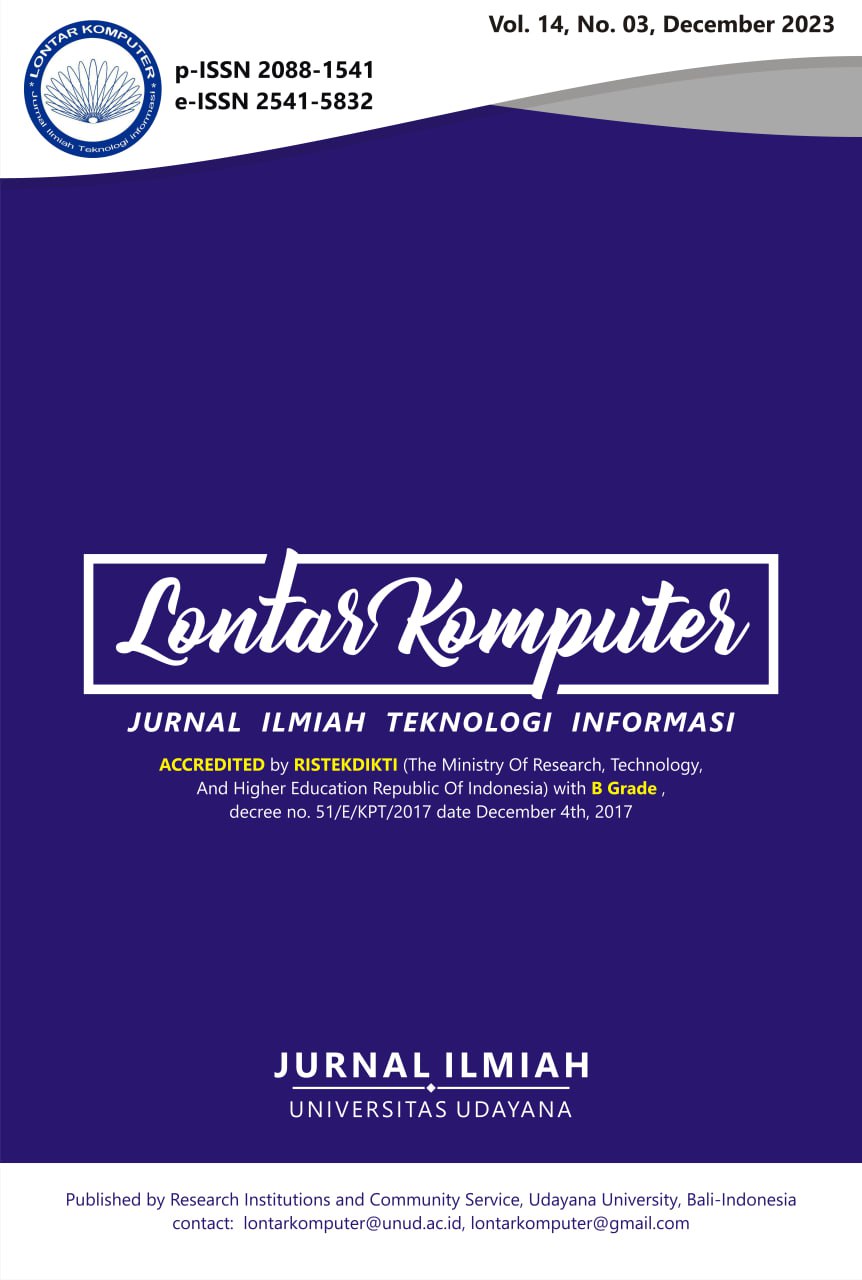Enhanced Performance of Dynamic Neural Network Model using Wavelet Activation Functions
Abstract
Both static and dynamic adaptive neural networks have been broadly utilized in mathematical modeling and numerical analysis. This study aimed to enhance the accomplishment of Dynamic Neural Networks (DNN) models by applying wavelet functions as activation functions. Research that models and forecasts the intensity of solar radiation in Mataram City shows that combining B-Spline and Morlet wavelet activation functions can significantly increase the DNN model performance. Wavelet-DNN (W-DNN) was modeled with an identical architecture; the best showed the increase in the model achievement (0.7596 points for in-sample and 0.8502 points for out-sample data). Mainly for out-sample data, the model's performance using the W-DNN+ intervention model increased by 4.0492 points.
Downloads
References
[2] H. Zang, X. Jiang, L. L. Cheng, F. Zhang, Z. Wei, and G. Sun, “Combined empirical and machine learning modeling method for estimation of daily global solar radiation for general meteorological observation stations,” Renewable Energy, vol. 195, 2022, doi: 10.1016/j.renene.2022.06.063.
[3] E. O. Yuzer and A. Bozkurt, “Deep learning model for regional solar radiation estimation using satellite images,” Ain Shams Engineering Journal, 2022, doi: 10.1016/j.asej.2022.102057.
[4] M. K. Nematchoua, J. A. Orosa, and M. Afaifia, “Prediction of daily global solar radiation and air temperature using six machine learning algorithms; a case of 27 European countries,” Ecological Informatics, vol. 69, 2022, doi: 10.1016/j.ecoinf.2022.101643.
[5] A. N. M. F. Faisal, A. Rahman, M. T. M. Habib, A. H. Siddique, M. Hasan, and M. M. Khan, “Neural networks based multivariate time series forecasting of solar radiation using meteorological data of different cities of Bangladesh,” Results in Engineering, vol. 13, 2022, doi: 10.1016/j.rineng.2022.100365.
[6] F. Sohrabi Geshnigani, M. R. Golabi, R. Mirabbasi, and M. N. Tahroudi, “Daily solar radiation estimation in Belleville station, Illinois, using ensemble artificial intelligence approaches,” Engineering Applications of Artificial Intelligence, vol. 120, 2023, doi: 10.1016/j.engappai.2023.105839.
[7] R. Gallo, M. Castangia, A. Macii, E. Macii, E. Patti, and A. Aliberti, “Solar radiation forecasting with deep learning techniques integrating geostationary satellite images,” Engineering Applications of Artificial Intelligence, vol. 116, 2022, doi: 10.1016/j.engappai.2022.105493.
[8] A. Geetha et al., “Prediction of hourly solar radiation in Tamil Nadu using ANN model with different learning algorithms,” Energy Reports, vol. 8, 2022, doi: 10.1016/j.egyr.2021.11.190.
[9] S. Bahri, “Modeling of Solar Radiation Using the Wavelet Neural Network Model in Mataram City Lombok Island,” Lontar Komputer : Jurnal Ilmiah Teknologi Informasi, vol. 11, no. 3, p. 178, Dec. 2020, doi: 10.24843/lkjiti.2020.v11.i03.p06.
[10] J. D. Rios, A. Y. Alanis, N. Arana-Daniel, C. Lopez-Franco, and E. N. Sanchez, Neural networks modeling and control: Applications for unknown nonlinear delayed systems in discrete time. 2020.
[11] A. J. Hussain, P. Liatsis, M. Khalaf, H. Tawfik, and H. Al-Asker, “A Dynamic Neural Network Architecture with Immunology Inspired Optimization for Weather Data Forecasting,” Big Data Research, vol. 14, pp. 81–92, Dec. 2018, doi: 10.1016/j.bdr.2018.04.002.
[12] M. Akhtar, M. U. G. Kraemer, and L. M. Gardner, “A dynamic neural network model for predicting risk of Zika in real time,” BMC Medicine, vol. 17, no. 1, Sep. 2019, doi: 10.1186/s12916-019-1389-3.
[13] X. Sun et al., “Prediction of time-varying inner wall temperature of surge lines by a dynamic neural network,” Nuclear Engineering and Design, vol. 383, 2021, doi: 10.1016/j.nucengdes.2021.111441.
[14] N. Dropka, M. Holena, S. Ecklebe, C. Frank-Rotsch, and J. Winkler, “Fast forecasting of VGF crystal growth process by dynamic neural networks,” Journal of Crystal Growth, vol. 521, 2019, doi: 10.1016/j.jcrysgro.2019.05.022.
[15] G. Gravanis, I. Dragogias, K. Papakiriakos, C. Ziogou, and K. Diamantaras, “Fault detection and diagnosis for non-linear processes empowered by dynamic neural networks,” Computers & Chemical Engineering, vol. 156, 2022, doi: 10.1016/j.compchemeng.2021.107531.
[16] Y. Yang et al., “Prediction of effluent quality in a wastewater treatment plant by dynamic neural network modeling,” Process Safety and Environmental Protection, vol. 158, 2022, doi: 10.1016/j.psep.2021.12.034.
[17] S. Bahri, M. R. Alfian, and N. Fitriyani, “Dynamic Neural Network Model Design for Solar Radiation Forecast,” Lontar Komputer : Jurnal Ilmiah Teknologi Informasi, vol. 13, no. 2, p. 96, Aug. 2022, doi: 10.24843/LKJITI.2022.v13.i02.p03.
[18] M. Unser, “Ten Good Reasons for using Spline Wavelets,” Proceedings of SPIE – The International Society for Optical Engineering, 1997.

This work is licensed under a Creative Commons Attribution 4.0 International License.
The Authors submitting a manuscript do so on the understanding that if accepted for publication, the copyright of the article shall be assigned to Jurnal Lontar Komputer as the publisher of the journal. Copyright encompasses exclusive rights to reproduce and deliver the article in all forms and media, as well as translations. The reproduction of any part of this journal (printed or online) will be allowed only with written permission from Jurnal Lontar Komputer. The Editorial Board of Jurnal Lontar Komputer makes every effort to ensure that no wrong or misleading data, opinions, or statements be published in the journal.
 This work is licensed under a Creative Commons Attribution 4.0 International License.
This work is licensed under a Creative Commons Attribution 4.0 International License.























